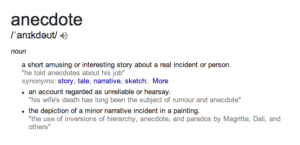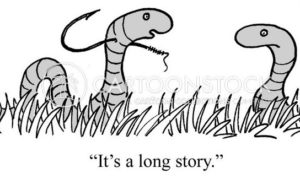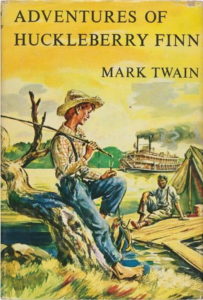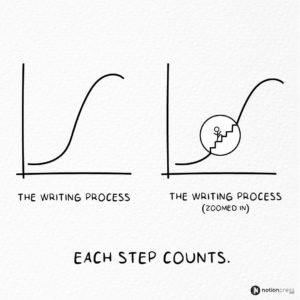How to write an anecdote? A Definitive Guide for Writers
If you’re writing a book and looking for ways to bring it alive, anecdotes are the answer! An anecdote is a story in a shorter version, more focused on one particular instance or time. It brings out what you feel about the subject in a more vivid way than just plain facts and figures.
In this blog, we’ll delve into what an anecdote is and how to write one effectively as part of your book. Knowing what an anecdote is is also important; it should be used strategically instead of randomly scattered through your book. We’ll look at what makes an anecdote stand out so that when you include them in your book it fascinates readers with its charm and grace.
- What is an anecdote?
- Understanding the purpose of an anecdote
- Knowing when to use an anecdote
- The different types of anecdotes
- Examples of anecdotes from famous writers
- The do’s and don’ts of writing anecdotes
- How to write an effective anecdote
- Anecdote writing tips for writers
- Anecdote exercises for writers
What is an anecdote?
Lets us begin by addressing what is an anecdote. It is a short and often amusing or interesting story about a particular incident or event. It can be personal, a what happened to your moment, or it can be based on something that someone else experienced. An anecdote is often used to illustrate a point in an article, although the stories are not necessarily related directly to what the author is trying to say and may just be entertaining filler.

To understand an anecdote, it helps to research any background information to explore what led up to the moment being described. Additionally, it’s important to read between the lines and question what there might have been beyond what is being stated – what impact did this incident have on the people involved? A well-told anecdote can evoke emotion in its readers and transport them directly into the moment described so that they feel like they are right there with those involved.
Understanding the purpose of an anecdote
An anecdote is a short and engaging account of an incident or event. They are usually humorous or inspiring, capturing attention through the power of storytelling. Anecdotes can be used to effectively add value and flavor to your book or story by providing readers with a distinctive snapshot of what happened and including some background information as well.
Additionally, they are often used as a way to introduce characters in your book/story in a memorable way, as anecdotes that focus on what particular characters do can illustrate what type of people they are. Furthermore, anecdotes can also be used to pleasantly surprise the reader by turning a conventional situation into something unusual.
This helps sustain interest in what is being written and allows for more creative writing since it leaves more room for interesting plot points and details that make the narrative more appealing.
Knowing when to use an anecdote
An anecdote is a short and interesting story that is usually related to a broader topic of discussion. It can be used in speech or writing, often providing a memorable introduction or conclusion to your piece.
Most importantly, it is used to help engage and captivate the reader/listener and brings about emotion, thought, or idea in a way that makes them sit up and take notice. Knowing when to use an anecdote is what counts so that you don’t lose your audience’s attention. Understanding the purpose of an anecdote is crucial to know how to write an anecdote.

Utilizing an anecdote effectively will come with experience and practice; what should be remembered though is that using an anecdote works best when it fits well within the context of what you are discussing, particularly if it relates to your point or larger concept you are attempting to convey. If used wisely, anecdotes can make any piece more impactful and memorable.
The different types of anecdotes
By using anecdotes, writers can add depth to their written pieces by adding interesting elements and real-life examples. There are various types you should know before you start on how to write a relevant anecdote; for example, you may use an anecdotal introduction which helps you capture your readers’ attention by introducing something unexpected at the beginning of your article.
Likewise, you could use an illustrative anecdote that supports and enhances what has previously been established in the article.
Another type is the final anecdote, which comes at the end of a paragraph or essay and can help thematically close the piece. Anecdotes come in many forms, allowing writers to choose what works best for their particular writing style and purpose.
Examples of anecdotes from famous writers
Famous writers have effectively used the tool of anecdotes to their advantage in various popular books. For instance, Kurt Vonnegut’s Slaughterhouse-Five tells the story of WWII through a collection of anecdotes. Similarly, JK Rowling brought humor and lightheartedness to the Harry Potter series through her anecdotes regarding her characters’ odd habits or funny conversations.

A classic example from Mark Twain’s Adventures of Huckleberry Finn is when Huck experiences a sudden moral dilemma over his decision to free Jim – he asks whether it would be right or wrong, concludes he’s been taught wrong most of his life but decides what he knows in his heart to be right.

Anecdotes such as these are what make such works resonate with readers today, bringing them back time and time again.
The do’s and don’ts of writing anecdotes
When you’re writing anything, it’s important to understand what an anecdote is and what your do’s and don’ts are. When writing anecdotes, the goal is to make them interesting, insightful, and effective while engaging the reader. To do this effectively, there are key points of what to do — or not to do.
The do’s
Firstly, include relevant details, be brief yet descriptive when narrating what has happened, and use vivid language.
Secondly, choose carefully what kind of story will you tell depending on the target audience; focus on what could be interesting for them.
Thirdly, unify your ideas; keep the narrative tight with clear transitions between sections of the story.
Lastly, try to devote more attention to impactful moments in the story instead of going into too many unnecessary details about what happened before or after.
The don’ts
On the other hand, certain things should be avoided at all costs: embellishing holds no place in good storytelling; stay true to tales like any good writer should; don’t commit spelling mistakes and avoid living cliché phrases so your writing can stay fresh. Keep these rules in mind when crafting your stories and you will have powerful anecdotes that will engage readers!
How to write an effective anecdote?
It takes a great deal of skill to write an anecdote that is both engaging and impactful.
When writing an anecdote, it is important to keep the purpose in mind – the goal should be to provide information or illustrate a point to captivate your readers and keep them interested in your story.

Begin by thinking of an insightful and unique experience that you have encountered, which relates directly to the relevant point you are trying to make. Make sure this story is as captivating as possible; add detail/description, interesting characters, and vivid language.
Lastly, bring your story full circle by connecting how this experience impacted your topic or how it was informative for your readers.
Anecdote writing tips for writers
For writers searching for tips on writing anecdotes that will captivate their readers, there are a few key points to bear in mind. Firstly, try and pick an intriguing anecdote – one that is both significant and relevant to the topic at hand. Make sure that the story you choose is impactful and paints a vivid picture of the situation.

Additionally, aim to keep your anecdote concise – try not to ramble on with unnecessary details as this can detract from its effectiveness. Lastly, use effective language – be creative when writing and make sure it grabs attention for it to truly leave an impression on your readers.
By keeping these tips in mind when crafting your anecdotes, you’ll be sure to fascinate your readers with heartfelt stories full of intrigue and impact!
Anecdote exercises for writers
Writing anecdotes is a great way to engage readers, through humorous or poignant moments. If you want to practice writing anecdotes, some exercises may help you hone your skills.
One useful exercise is to write about a memorable moment in your own life – try describing it simply yet powerfully, as if it’s someone else’s memory. Another exercise is to imagine inspiring and humorous scenarios and write down a short anecdote; this can help writers come up with interesting stories.

Finally, keep a list of funny moments experienced by friends or family and use those details in your writing – they can be great sources of inspiration! With these tips for writing anecdotes – plus some practice – you’ll be able to craft some entertaining stories, helping others gain insight into important topics and connect on an emotional level with readers.

